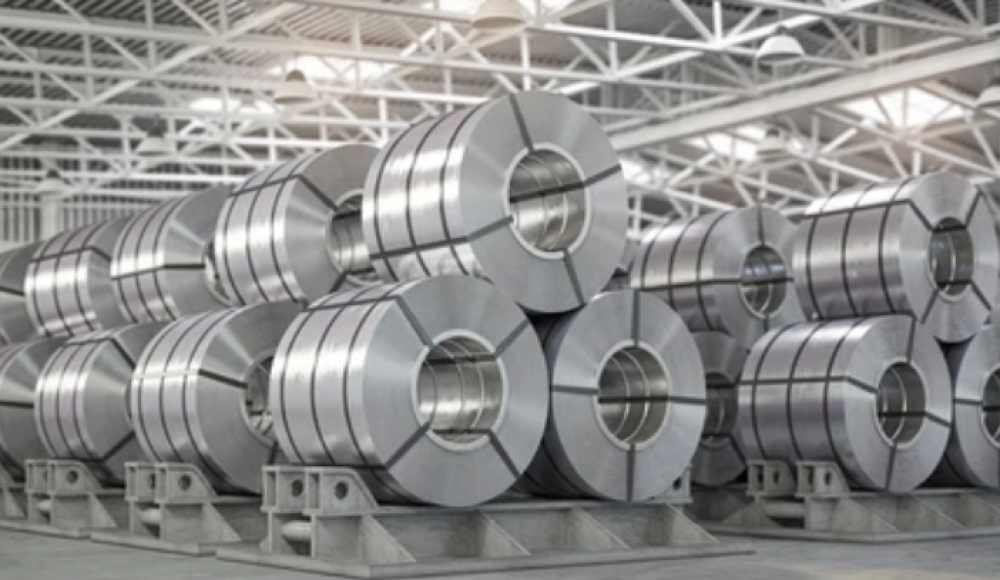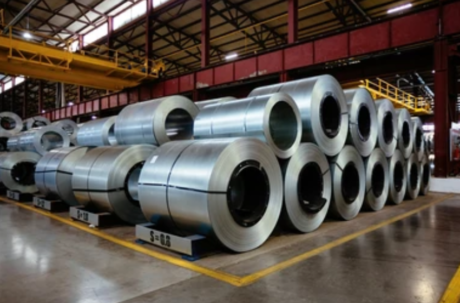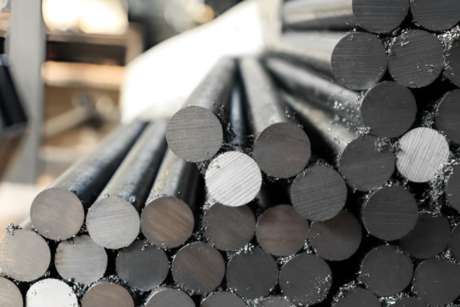تعتبر السبائك ضرورية في كل جانب من جوانب العالم التجاري الحديث. لديهم نطاق واسع من التطبيقات في مختلف الصناعات. وتتكون هذه المواد غير العادية من تركيب عنصرين أو أكثر بخصائص غير موجودة في العناصر الأساسية. بدءا من العصر البرونزي الأسلحة الآسيوية التي ساهمت في تشكيل الممالك إلى المواد النانوية الموجودة في التقنيات المعاصرة, السبائك متعددة الاستخدامات وقد تم استخدامها على نطاق واسع عبر التاريخ. لذا, في هذه المقالة, سننظر في موضوع السبائك المثير للاهتمام ونقدم معلومات عن تاريخ السبائك, ناخبيهم, والمبادئ المستخدمة في صنع السبائك.
ما هي سبيكة?
السبيكة بعبارات بسيطة هي خليط من معدنين أو أكثر أو معدن وواحد أو أكثر من اللافلزات. تظهر السبائك ميزات معينة مثل القوة, متانة, الحماية ضد التآكل, والحرارة وبالتالي فهي عنصر حيوي يستخدم في العديد من الصناعات. السبيكة عبارة عن مزيج من معدنين أو أكثر وأحيانًا مع مواد غير معدنية تتضمن تسخين المكونات وخلطها للحصول على مادة. له خصائص تميزه عن المكونات المكونة له.
ما هو تاريخ السبائك?
وقد تم استخدام السبائك منذ ذلك الحين 3000 قبل الميلاد. نحاس ( نحاس والزنك) والبرونزية ( النحاس والقصدير) كانت سبائك قديمة. تم تطبيق التقنيات المعدنية المبكرة في عملية التصنيع, كانت هذه التقنية المعدنية المبكرة تُعرف باسم الصهر. في عملية الصهر, تم صهر خامين من تركيبات مختلفة معًا.
بشكل ملحوظ, في القرن التاسع عشر, تم التحقيق في وجود آثار للنيكل مع نحاس عنصر لكنه لم يكن معزولا. تم صهر خامات هذين المعدنين وتكوين النيكل النحاسي. المنتج الذي تم تشكيله بعد عملية الصهر أعطى قوة عالية.
قام كل من البرونز والنحاس بتغيير السلوك الناعم للنحاس لإظهار الصلابة, صلابة, والمرونة.
تكوين السبائك
نسبة مختلفة من العناصر تعطي سبائك مختلفة. تتمتع هذه السبائك بقدرات وتطبيقات فريدة. دعونا نحصل على فهم أفضل لتكوين السبائك. وفيما يلي الجدول التفصيلي لنسب تكوينها.
| سبيكة | المكونات الرئيسية (النسبة المئوية بالوزن) |
| فُولاَذ | |
| – الصلب الكربوني | الحديد: 98-99%, ج: 0.2-2.1% |
| - سبائك الصلب | الحديد: 95-98%, ج: 0.2-2%, كر: 0.5-2%, في: 0.5-2%, شهر: 0.1-1% |
| – ستانلس ستيل | الحديد: 70-88%, كر: 10.5-20%, في: 0-10%, ج: 0.08-1% |
| – أداة الصلب | الحديد: 70-95%, ج: 0.5-2%, دبليو: 0-18%, شهر: 0-5%, الخامس: 0-5% |
| الحديد الزهر | |
| – حديد الزهر الرمادي | الحديد: 93-95%, ج: 2-4%, و: 1-3% |
| – حديد الزهر المطيل | الحديد: 94-96%, ج: 3-4%, و: 1.8-2.8%, ملغ: 0.03-0.05% |
| – حديد الزهر الأبيض | الحديد: 94-96%, ج: 2-3.5%, و: 0.5-1.5% |
| سبائك الألومنيوم | |
| - 2024 الألومنيوم | آل: 90.7-94.7%, النحاس: 3.8-4.9%, ملغ: 1.2-1.8%, من: 0.3-0.9% |
| - 6061 الألومنيوم | آل: 95.8-98.6%, ملغ: 0.8-1.2%, و: 0.4-0.8%, النحاس: 0.15-0.4% |
| - 7075 الألومنيوم | آل: 87.1-91.4%, الزنك: 5.1-6.1%, ملغ: 2.1-2.9%, النحاس: 1.2-2% |
| سبائك النحاس | |
| - نحاس | النحاس: 60-70%, الزنك: 30-40% |
| - البرونزية | النحاس: 88-97%, سن: 3-12% |
| سبائك التيتانيوم | |
| - درجة 5 (تي-6Al-4V) | ل: 88.6-91%, آل: 5.5-6.75%, الخامس: 3.5-4.5% |
| - درجة 2 | ل: 99.2-99.7%, الحديد: 0.3%, يا: 0.25% |
أنواع السبائك
وهنا أنواع معينة من السبائك;
1. السبائك الحديدية
تتكون السبائك الحديدية من الحديد كأحد المكونات الرئيسية. هذه لها العديد من التطبيقات في مجالات مختلفة. وتشمل السبائك الحديدية الشائعة:
1. فُولاَذ
فُولاَذ هي سبيكة تتشكل نتيجة خلط الحديد مع عناصر أخرى, أي. كربون. يمكن أن تقع كمية الكربون بينهما 0. 2% ل 2. 1% بالوزن. عناصر أخرى مثل الكروم, النيكل, أو يمكن أيضًا استخدام الفاناديوم لتغيير خصائص أخرى للصلب. تشمل أنواع مختلفة من الفولاذ:
- الكربون الصلب: إنه يستضيف الحديد والكربون فقط دون أي درجة أخرى من التركيب الكيميائي. يصنفونها على أساس نسبة الكربون أي. أنابيب الصلب الكربوني, أنابيب الصلب الكربوني المتوسط, أنابيب الصلب عالية الكربون. عادةً ما يكون الفولاذ الكربوني قويًا وصلبًا وغالبًا ما يستخدم في صناعات البناء والصناعات التحويلية.
- سبائك الصلب: أنه يحتوي على كميات أصغر أخرى من عناصر صناعة السبائك مثل الكروم مما يزيد من القوة, النيكل مما يزيد من المتانة, والموليبدينوم يزيد من مقاومة التآكل والتآكل. ومن بين استخدامات سبائك الصلب, لديها العديد من التطبيقات في صناعة منتجات السيارات, الات, والأدوات.
- الفولاذ المقاوم للصدأ: أنه يحتوي على 5% الكروم الذي يعطي الفولاذ قدرة جيدة على مقاومة التآكل. هذا النوع من الكربون له تطبيقات في أدوات المطبخ, الأدوات الطبية, وملحقات البناء.
- أداة الصلب: تحتوي على مكونات مثل: التنغستن, الموليبدينوم الكوبالت, والفاناديوم. وتشمل خصائصه المتانة العالية والمقاومة للحرارة. هذه الميزات تجعلها مناسبة للقطع, الضغط, وصنع أدوات الصب.
2. الحديد الزهر
الحديد الزهر هو أحد الأنواع القديمة لسبائك الحديد والكربون. تحتوي على كمية كربون تزيد عن 2% والسيليكون. بعض السمات المميزة هي صلابته, هشاشة, والحافة التي تتمتع بها على معظم السبائك الأخرى من حيث قابلية الصب. وتشمل أنواع الحديد الزهر:
- الحديد الزهر الرمادي: أنه يحتوي على رقائق الجرافيت. إنها تجعلها رمادية اللون ويسهل تدويرها بشكل عام. بعض من تطبيقه يشمل: كتل المحرك, أنابيب, والآلات المختلفة.
- مواد مطيلة (عقدي) الحديد الزهر: يحتوي على عقيدات جرافيتية كروية مما يزيد من الليونة وقوة التأثير. وله العديد من التطبيقات في قطع غيار السيارات, التروس, والأعمدة المرفقية.
- الحديد الزهر الأبيض: وهي تشتمل أساسًا على كربيد الحديد – وهو شديد الصلابة, ولكنها هشة أيضًا. يتم تطبيقه على الطلاءات المقاومة للتآكل والقطاعات الصناعية المختلفة حيث تكون خاصية مقاومة التآكل أمرًا بالغ الأهمية.
2. السبائك غير الحديدية
لا تحتوي السبائك غير الحديدية على الحديد كعنصر من عناصر التركيب الرئيسي. هذه هي الأفضل بسبب كثافتها المنخفضة, وميزات جيدة مضادة للتآكل. إلى جانب ذلك, لديهم الموصلية الكهربائية والحرارية العالية. تشمل السبائك غير الحديدية الشائعة:
1. سبائك الألومنيوم
الألومنيوم تتمتع السبائك بخصائص مقاومة جيدة للتآكل. وعادة ما يتم دمجها مع عناصر أخرى مثل النحاس, المغنيسيوم, السيليكون, والزنك. تشمل الاستخدامات الشائعة:
- صناعة الطيران: سبائك الألومنيوم لها تطبيقات واسعة في الهياكل, جسم الطائرة, والأجنحة بسبب خفة وزنها ولكن قوتها العالية.
- صناعة السيارات: إنها قابلة للتطبيق بشكل كبير في جسم السيارة, جزء المحرك, عجلات, الخ نظراً لفعالية الوقود وسهولة وزن الجسم.
- صناعة التعبئة والتغليف: تستخدم علب ورقائق الألمنيوم في تعبئة الأطعمة والمشروبات. لأنها غير سامة وقابلة لإعادة التدوير.
2. سبائك النحاس
تشتهر سبائك النحاس أساسًا بخصائصها المتمثلة في كونها موصلة جيدة للكهرباء ومضادة للتآكل. تشمل سبائك النحاس الشائعة:
- نحاس: سبيكة من النحاس والزنك ذات مظهر ذهبي وقابلية تصنيع جيدة. يجد التطبيق في صناعة القيثارات, الطبول, الحلي, وتركيبات السباكة.
- برونزية: تركيبة خاصة من المعدن; يتميز النحاس والقصدير بصلابته ومقاومته للتآكل والتآكل. ينطبق في تصنيع المحامل, جلبة, والمنحوتات.
3. سبائك التيتانيوم
بعض الخصائص المهمة التي تجعل سبائك التيتانيوم مفضلة هي نسبة القوة إلى الوزن العالية, مقاومة جيدة للتآكل, والتوافق الحيوي. لديهم العديد من التطبيقات في
- صناعة الطيران: فهي خفيفة نسبيًا وفي نفس الوقت متينة. لذا, لديهم تطبيقات في صنع إطارات الطائرات, المحركات, المرشحات, والسحابات.
- زراعة طبية: هذه غير قابلة للتحلل ومتوافقة مع جسم الإنسان. لذا, لديهم العديد من التطبيقات في صنع أسطح تحمل مفصلية في بدائل المفاصل, الأطراف الاصطناعية للأسنان, والأدوات الجراحية.
- التطبيقات البحرية: يتم استخدامها في صنع أعمدة المروحة لأنه من المؤكد أن الأعمدة يجب أن تعمل تحت الماء وتتمتع بأفضل مقاومة للتآكل.
ما هو الفرق بين المعادن, غير المعادن, والسبائك?
هنا هو الجدول التفصيلي لوصف الفرق بين السبائك, المعادن, وغير المعادن.
| ملكية | المعادن | غير المعادن | سبائك |
| تعبير | عنصر واحد (على سبيل المثال, الحديد, النحاس) | عنصر واحد (على سبيل المثال, ج, يا) | خليط من المعادن أو المعادن مع اللافلزات (على سبيل المثال, فُولاَذ, نحاس) |
| التوصيل الكهربائي | عالي (على سبيل المثال, النحاس, آل) | قليل (على سبيل المثال, س, ص) | يختلف (مرتفعة بشكل عام بالنسبة للسبائك ذات الأساس المعدني) |
| توصيل حراري | عالي | قليل | يختلف (مرتفعة بشكل عام بالنسبة للسبائك ذات الأساس المعدني) |
| المرونة | عالي (على سبيل المثال, الاتحاد الأفريقي, حج) | قليل (على سبيل المثال, س, ص) | مرتفعة بشكل عام (على سبيل المثال, برونزية, سبائك الألومنيوم) |
| ليونة | عالي (على سبيل المثال, النحاس, آل) | قليل (على سبيل المثال, س, ص) | مرتفعة بشكل عام (على سبيل المثال, فُولاَذ, نحاس) |
| قوة | عامل (على سبيل المثال, عالية لتي, منخفض لـ Pb) | منخفضة بشكل عام (على سبيل المثال, الجرافيت, الكبريت) | مرتفعة بشكل عام (على سبيل المثال, الفولاذ المقاوم للصدأ, سبائك التيتانيوم) |
| المقاومة للتآكل | عامل (على سبيل المثال, عالية بالنسبة للاتحاد الأفريقي, منخفضة بالنسبة للحديد) | مرتفعة بشكل عام (على سبيل المثال, الماس) | مرتفعة بشكل عام (على سبيل المثال, الفولاذ المقاوم للصدأ, سبائك الألومنيوم) |
| كثافة | مرتفعة بشكل عام (على سبيل المثال, الحديد, الرصاص) | منخفضة بشكل عام (على سبيل المثال, ح, ج) | عامل (على سبيل المثال, عالية للصلب, منخفضة لسبائك الألومنيوم) |
| الاستخدامات النموذجية | الهيكلية, كهربائي, والتطبيقات الحرارية | العزل, أشباه الموصلات, أساسيات الحياة (على سبيل المثال, O2) | مجموعة واسعة من الصناعية, الهيكلية, والتطبيقات المتخصصة (على سبيل المثال, الفضاء الجوي, السيارات) |
ما هي تطبيقات السبائك?
لذا, دعونا نناقش بعض التطبيقات البارزة للسبائك.
- بناء: المادة الرئيسية في بناء هياكل البناء هي الفولاذ, أي. سبيكة من الحديد والكربون.
- الفضاء الجوي: تحتاج الطائرات إلى مواد ذات خصائص مثل القوة العالية, كثافة منخفضة, ومقاومة درجات الحرارة العالية. لذا, تتميز سبائك التيتانيوم بمزايا نسبة القوة إلى الوزن العالية والثبات الحراري.
- السيارات: إن الوزن الخفيف والقدرة على مقاومة التآكل يجعلان من سبائك الألومنيوم الخيار الأفضل لتحسين الاقتصاد في استهلاك الوقود والأداء. وتشمل مكونات السيارات المعتمدة على السبائك أيضًا عجلات من سبائك الألومنيوم, يتم إنتاجه عادة من قبل الشركات المصنعة مثل كيباردو باستخدام A356.2 للصب و6061-T6 للتزوير.
- إلكترونيات: تتمتع السبائك ذات الأساس البرونزي بتطبيقات واسعة في التوصيلات والمكونات الكهربائية بسبب موصليتها وقوتها.
- أجهزة طبية: لسبائك الفولاذ المقاوم للصدأ والكوبالت والكروم تطبيقات في أدوات ومعدات الزرع والجراحة. ويرجع ذلك أساسًا إلى أن هذه المعادن لا تثير أي رد فعل سلبي من أنسجة الجسم وهي قوية بدرجة كافية.
ما هي فوائد السبائك?
- زيادة القوة: قوة وصلابة عالية للمعادن الأساسية الخالية من إضافات السبائك.
- تعزيز المقاومة للتآكل: تحسين مقاومة الصدأ وكذلك أشكال التدهور الأخرى.
- متانة أكبر: قيم أصلية أعلى في الظروف الصعبة.
- خصائص مخصصة: عند الدفع نحو العلاقة بين الملاءمة والتخصيص, ومن المهم ملاحظة أن الخصائص يجب أن تكون مرتبطة بتطبيقات محددة.
- كفاءة التكلفة: من المحتمل أن تخفض التكاليف من خلال استخدام المواد.
ما هي حدود السبائك?
- خصائص معقدة: حتى أنها أقل سهولة في التنبؤ والتحكم من المعادن الأولية.
- تكاليف أعلى: يمكن أن يكون تحضير بعض السبائك المحققة أكثر تكلفة.
- صعوبات التصنيع: يمكن تفتيتها, إصلاحه, والمستعبدين. إلى جانب ذلك, قد تنطوي على معالجة وتصنيع معقدة.
- تأثير بيئي: أنها تزيد من احتمال النفقات البيئية والطاقة الكبيرة.
خاتمة
لقد كانت السبائك دائمًا جزءًا مهمًا لأنها تميل إلى امتلاك ميزات أفضل بكثير من المعادن. من خلال تغيير المعادن والعناصر, يستطيع العديد من الباحثين والمهندسين إنتاج مواد تناسب الاحتياجات المطلوبة. لذا, وهذا يساعد على زيادة كفاءة وجودة المواد المستخدمة في البناء, مواصلات, إلكترونيات, والصناعات الصحية. علاوة على ذلك, تساعد خصائص السبائك المختلفة في اختيار المادة المناسبة لتطبيق معين. كما أنها تساعد على تحسين السلامة, فعالية, والمتانة. اتصل بنا لمزيد من الأفكار المهنية.
الأسئلة الشائعة
1. ما هو المبدأ الأساسي المستخدم لإنشاء سبيكة ذات خصائص محسنة?
يُعرف المبدأ الأساسي باسم تعزيز الحل الصلب أو تعزيز التشتت.
2. لماذا تعتبر السبائك الحديدية ممغنطة بشكل عام؟, في حين أن العديد من السبائك غير الحديدية ليست كذلك?
السبائك الحديدية مغناطيسية لأن مكونها الأساسي هو حديد (الحديد). الحديد هو المغناطيسية الحديدية مادة, مما يعني أن تركيبها الذري يسمح لها بالحفاظ على لحظة مغناطيسية دائمة. سبائك غير حديدية (مثل تلك التي تعتمد على الألومنيوم, نحاس, أو التيتانيوم) غالبا ما تستخدم المعادن الأساسية التي هي ديامغناطيسية أو مغنطيسي, تفتقر إلى المحاذاة المغناطيسية الجوهرية المطلوبة للانجذاب بقوة إلى المغناطيس.
3. كيف الكروم (كر) جعل الفولاذ المقاوم للصدأ مقاومًا للتآكل?
يحتوي الفولاذ المقاوم للصدأ على الحد الأدنى من 10.5% الكروم (كر). عندما يتعرض الكروم للأكسجين, فإنه يشكل بسرعة رقيقة جدا, كثيفة, طبقة غير مرئية من أكسيد الكروم (Cr2O3) على السطح. تسمى هذه الطبقة أ طبقة التخميل. هذه الطبقة غير تفاعلية إلى حد كبير وتعمل بمثابة طبقة حاجز وقائي, عزل الحديد الموجود أسفله من الأكسجين والرطوبة, وبالتالي منع الصدأ (أكسيد الحديد) من التشكيل.
4. ما أهمية الليونة في السبائك الهيكلية مثل الفولاذ؟?
ليونة يشير إلى قدرة المادة على الخضوع لتشوه بلاستيكي كبير (تمتد أو الرسم) دون كسر. في التطبيقات الهيكلية مثل الجسور أو ناطحات السحاب, الليونة أمر حيوي لأنه يعني أن الهيكل سوف تشويه وإعطاء تحذير (على سبيل المثال, الانحناء) قبل أن تتعرض لفشل هش كارثي. هذه الخاصية أمر بالغ الأهمية للسلامة, إتاحة الوقت للتفتيش والإخلاء تحت الأحمال أو الضغوط الشديدة.
5. ما هي الخاصية المحددة التي تجعل سبائك التيتانيوم ضرورية للاستخدام في الغرسات الطبية?
تعتبر سبائك التيتانيوم ضرورية للزراعة الطبية بسبب خصائصها التوافق الحيوي. وهذا يعني أن جهاز المناعة في جسم الإنسان يتعرف على التيتانيوم على أنه موجود خاملة بيولوجيا; لا يسبب رد فعل التهابي أو سلبي, كما أنها لا تتحلل عند تعرضها لسوائل الجسم. وهذا يسمح بالزرع (مثل استبدال المفاصل أو تركيبات الأسنان) ليتم دمجها بشكل دائم في الجسم مع الحد الأدنى من خطر الرفض.
6. الى جانب القوة, ما هي الفائدة الرئيسية من صناعة سبائك النحاس مع الزنك؟ (لصنع النحاس) يمد?
الفائدة الرئيسية, بالإضافة إلى القوة الميكانيكية, أن مكاسب النحاس من إضافة الزنك قابلية تشغيل فائقة. يعد النحاس أحد أسهل المعادن في القطع, مطحنة, وتشغيل مخرطة, السماح للمصنعين بإنشاء أشكال معقدة (مثل تركيبات السباكة, الصمامات, والمكونات المعقدة) بسرعة ودقة, ولهذا السبب يتم استخدامه على نطاق واسع في الهندسة الدقيقة.
7. كيف عناصر صناعة السبائك في أداة الصلب (التنغستن, الموليبدينوم, الفاناديوم) تعزيز خصائصه?
صُممت أدوات الفولاذ للظروف القاسية. إضافة عناصر مثل التنغستن (دبليو), الموليبدينوم (شهر), والفاناديوم (الخامس) أشكال صعب, مركبات كربيد مستقرة داخل المصفوفة الحديدية. هذه الكربيدات مقاومة للغاية للحرارة والتآكل, مما يعطي أداة الصلب خصائصها الضرورية:
-
متانة عالية: مقاومة التآكل والتآكل.
-
صلابة حمراء: القدرة على الاحتفاظ بالصلابة وحافة القطع الحادة حتى عند تسخينها إلى درجات حرارة عالية (حرارة حمراء مملة) أثناء عمليات القطع أو الضغط عالية السرعة.







12 افكار عن "ما هي سبيكة? أنواعها, التكوين والتطبيقات في مختلف المجالات”